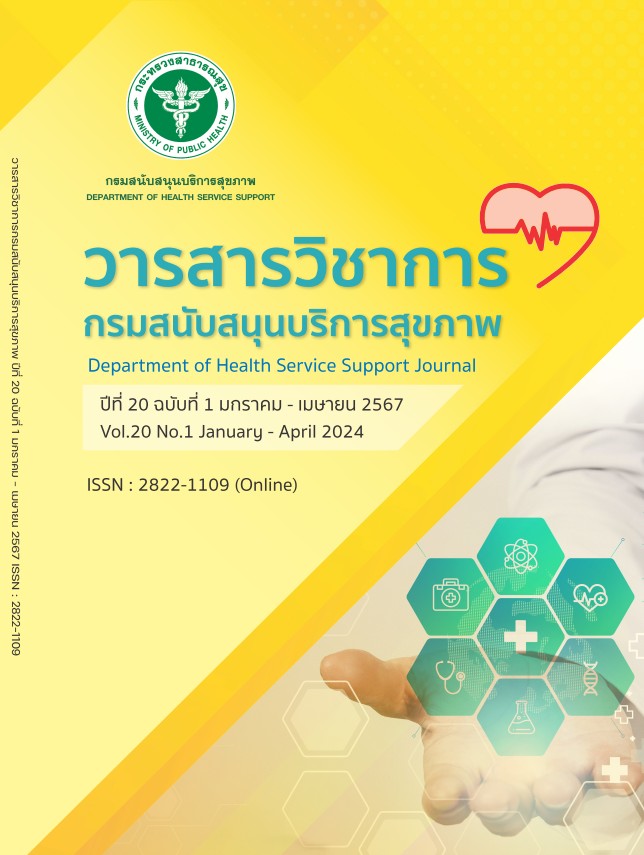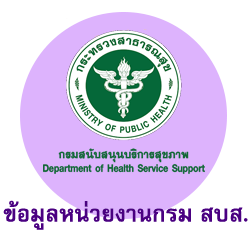การศึกษาการค้นหากลุ่มสงสัยป่วยความดันโลหิตสูงที่มารับบริการในโรงพยาบาลสังกัดกระทรวงสาธารณสุข ตามแนวทางการจัดการเมื่อพบผู้ที่มีความดันโลหิตสูงในโรงพยาบาล
บทคัดย่อ
การค้นหากลุ่มสงสัยป่วยความดันโลหิตสูงที่มารับบริการในโรงพยาบาลสังกัดกระทรวงสาธารณสุข ตามแนวทางการจัดการเมื่อพบผู้ที่มีความดันโลหิตสูงในโรงพยาบาล มีวัตถุประสงค์เพื่อค้นหาผู้ที่มีค่าความดันโลหิตสูงอันตราย (SBP ≥ 180 mmHg และ/หรือ DBP ≥ 110 mmHg) ได้รับการวินิจฉัย รักษา และควบคุมความดันโลหิตได้อย่างเหมาะสม รวมถึงทราบสถานะความดันโลหิตของตนเอง มีความรู้ในการปฏิบัติตนและสามารถควบคุมความดันโลหิตได้ ลดภาวะแทรกซ้อนจากโรคความดันโลหิตสูง และลดการเสียชีวิตก่อนวัยอันควร โดยมีกลุ่มเป้าหมายร่วมดำเนินงาน คือ โรงพยาบาลในสังกัดกระทรวงสาธารณสุข จำนวน 164 แห่ง จาก 76 จังหวัด ใน 12 เขตสุขภาพทั่วประเทศ คัดเลือกกลุ่มตัวอย่างโดยใช้วิธีการสุ่มตัวอย่างแบบเจาะจง และแบบบังเอิญ มีการติดตาม/ประเมินผลการดำเนินงานผ่าน 3 ตัวชี้วัด (แสดงผลในรายงาน Health Data Center (HDC)
ผลการดำเนินงาน ในระยะเวลาดำเนินการ 6 เดือน ตั้งแต่เดือนกุมภาพันธ์ - กรกฎาคม 2566 (ข้อมูล ณ วันที่ 16 สิงหาคม 2566) พบว่า การดำเนินงานค้นหาผู้ป่วยนอกที่มีค่า SBP ≥ 180 mmHg และ/หรือ DBP ≥ 110 mmHg และได้รับการวินิจฉัยเป็นโรคความดันโลหิตสูง (I10 - I15) ภายในวัน (ไม่นับรวม ER) เมื่อเปรียบเทียบข้อมูลผลการดำเนินงานระหว่างปี 2565 และปี 2566 ในช่วงเวลาเดียวกัน (เดือนกุมภาพันธ์ - กรกฎาคม) พบว่า ผลการดำเนินงานเพิ่มขึ้นเป็นร้อยละ 22.08 จากร้อยละ 18.62 ในปี 2565 และได้รับการวินิจฉัยเป็นโรคความดันโลหิตสูงทั้งหมด (ไม่นับรวม ER) (ข้อมูลสะสมระหว่างเดือนตุลาคม 2565 - สิงหาคม 2566) พบว่า ผลการดำเนินงานการวินิจฉัยเป็นโรคความดันโลหิตสูง ภายใน 7 วัน ในภาพรวม คิดเป็นร้อยละ 30 ภายในปีงบประมาณ คิดเป็นร้อยละ 43.94 และผู้ป่วยนอกที่มีค่า SBP ≥ 180 mmHg และ/หรือ DBP
≥ 110 mmHg และได้รับการวินิจฉัยเป็นผู้ป่วยโรคความดันโลหิตสูง (I10 - I15) ภายใน 7 วัน (นับรวม ER) คิดเป็นร้อยละ 28.48 ซึ่งผลการดำเนินงานเพิ่มขึ้นจากปีที่ผ่านมาทั้ง 3 ตัวชี้วัด สอดคล้องกับการศึกษาการเพิ่มอัตราการวินิจฉัยโรคความดันโลหิตสูงในโรงพยาบาลกาฬสินธุ์ ประเทศไทย ปี 2560 - 2562 คือ ผู้ป่วยที่ได้รับการติดตามความดันโลหิตซ้ำจะมีโอกาสได้รับการวินิจฉัยความดันโลหิตสูงมากกว่าไม่ได้รับการติดตามความดันโลหิตซ้ำ 3 เท่า และการศึกษารูปแบบการพัฒนาองค์กรพยาบาลในโรงพยาบาลชุมชนที่ยกระดับเป็นโรงพยาบาลทั่วไปตาม Service Plan: กรณีศึกษาโรงพยาบาลสมเด็จพระยุพราชสว่างแดนดิน คือ การออกแบบหรือพัฒนาระบบสารสนเทศทางการพยาบาลเพื่อการจัดการข้อมูลมีผลต่อระบบบริการพยาบาล ปัจจัยความสำเร็จ ผู้บริหารให้ความสำคัญและขับเคลื่อนการดำเนินงานเชิงนโยบาย การชี้แจง/สื่อสาร
การทำงานเป็นทีม การพัฒนา Flow Chart ที่ใช้ปฏิบัติงานได้จริง และ CPG ที่ชัดเจน การอบรมอัพเดทองค์ความรู้ด้านโรคไม่ติดต่อและอัพเดท CPG ให้กับเจ้าหน้าที่ผู้ปฏิบัติงาน การตั้งค่า Alert BP การเชื่อมโยงการดูแลและติดตามผู้ป่วยร่วมกับเครือข่าย การพัฒนาระบบข้อมูลและเฝ้าระวังฐานข้อมูล และการมีระบบส่งต่อผู้ป่วยรวมถึงมีการประเมิน กำกับ ติดตาม อย่างต่อเนื่อง ข้อเสนอแนะเพื่อการพัฒนา ควรมีการแลกเปลี่ยนเรียนรู้แนวทางการดำเนินงาน และการลงรหัส ICD - 10 ให้กับผู้เกี่ยวข้อง เช่น แพทย์ พยาบาล และ เจ้าหน้าที่ IT ควรชี้แจงให้กับองค์กรแพทย์เพื่อรับทราบนโยบายและดำเนินงาน และควรมีการกำหนดรหัส ICD - 10 ในผู้ป่วยที่ได้รับการวัดความดันโลหิตซ้ำแล้วพบว่าค่าความดันโลหิตปกติ
คำสำคัญ : ความดันโลหิตสูงระดับอันตราย การค้นหากลุ่มสงสัยป่วยความดันโลหิตสูง การยืนยันวินิจฉัย
โรคความดันโลหิตสูง
ดาวน์โหลด
เผยแพร่แล้ว
วิธีการอ้างอิง
ฉบับ
บท
การอนุญาต
ลิขสิทธิ์ (c) 2024 กรมสนับสนุนบริการสุขภาพ

This work is licensed under a Creative Commons Attribution-NonCommercial-NoDerivatives 4.0 International License.



